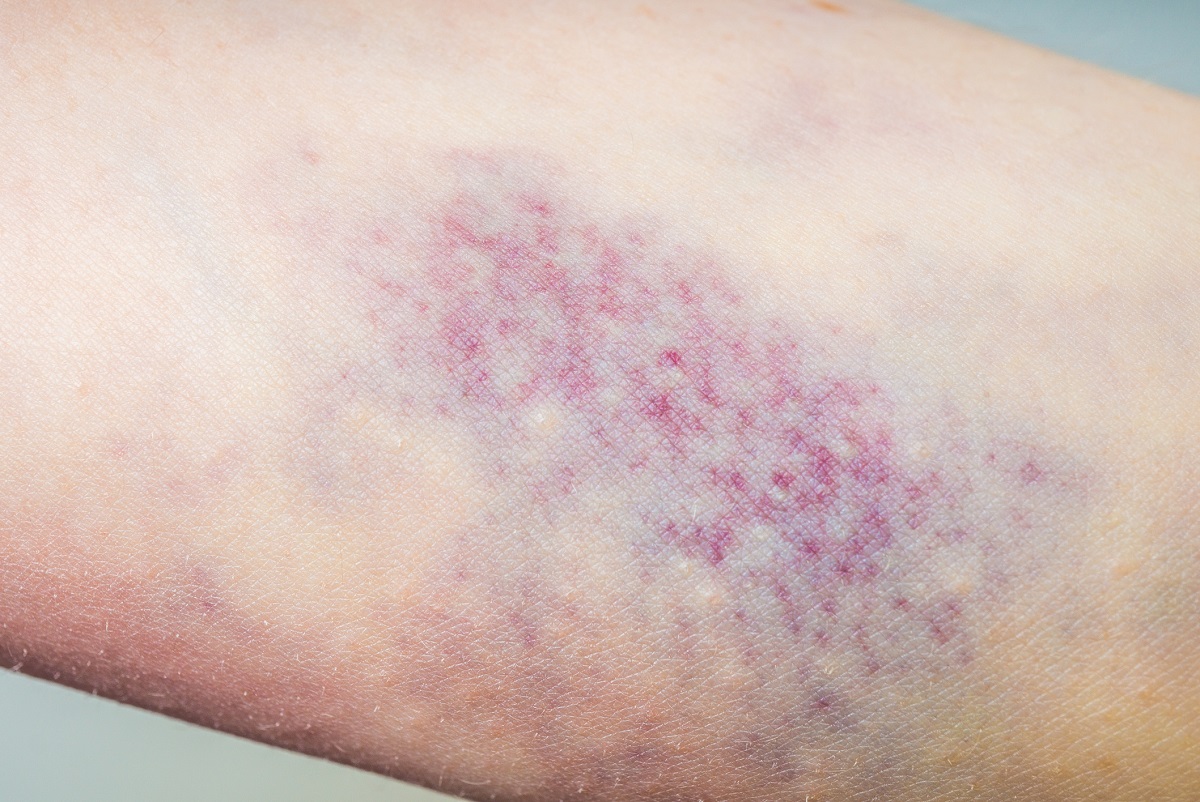- Clinic of Health and Diseases: Katarína Kopecká, Petr Kopecký
- Brief Human Anatomy: Pavel Fiala, Jíři Valenta, Lada Eberlová
- Intensive Medicine on the Principles of Internal Medicine: 2.: Zadák Zdeněk, Havel Eduard, a kolektiv
- Pathophysiology of liver damage:J. Plevková
- Transplantaciapecene.info - Liver disease: Barbara Marková, M.D.
- Transplantaciapecene.info - Metabolic diseases
- zona.fmed.uniba.sk - Liver
- medinfo.sk - Liver coma, pathophysiology, clinic and therapy: Miroslava Civáňová
- transplantaciapecene.info - Alcoholic liver disease (ALD)
- healthline.com - What you should know about liver failure
- ncbi.nlm.nih.gov - Liver failure
- mayoclinic.org - Acute liver failure
- childrenshospital.org - Liver failure
Liver failure: what is it and what symptoms does it have?

Liver failure means that the liver is not adequately performing its functions. It is a life-threatening condition that requires immediate treatment.
Most common symptoms
- Malaise
- Speech disorders
- Abdominal Pain
- Headache
- Increased body temperature
- Nausea
- Blood in the power
- Dementia
- Fever
- Black stool
- Bleeding
- Muscle stiffness
- Indigestion
- Lung Island
- Swelling of the limbs
- The Island
- Petechie
- Erectile dysfunction
- Menstrual cycle disorders
- Disorders of consciousness
- Mood disorders
- Tremor
- Buds
- Stool with blood - blood in the stool
- Light stool
- Itchy skin
- Dark urine
- Fatigue
- Water in the abdomen
- Vomiting
- Vomiting blood
- Yellowish skin
- Confusion
- Decrease in libido
- Liver enlargement
- Increased blood sugar levels
Characteristics
The prognosis of liver failure is very serious, although the liver has a very good regenerative capacity.
The damaged liver can recover.
Although the liver has the ability to regenerate, at a certain level of damage, regeneration is no longer possible. Severe disruption of homeostasis, disruption of the body's metabolism and other life-threatening disorders occur.
The mortality rate is higher than 50%.
Liver
The liver is the largest gland of the human body, without which it is impossible to live.
It is located just below the diaphragm. Its larger part is located under the right vault of the diaphragm.
The liver is an important organ in the body, the central organ of metabolism.
The liver processes food and fluids, producing energy and nutrients needed by the body.
What is the function of the liver?
- They have a detoxifying function - they act as a filter that traps harmful substances from the blood.
- They synthesize and store minerals and vitamins (B-complex, vitamin D, vitamin A, E, K). They release them into the circulation as needed.
- Metabolic function of sugars, fats and proteins.
- Involved in the production of coagulation factors.
- Immunological function - help fight infection.
- Produce gammaglobulins.
- Secrete bile necessary for digestion.
These cells are involved in the construction of the liver:
- Hepatocytes, which are the basic building block of the liver.
- Non-parenchymal cells
Hepatocytes
What factors damage hepatocytes?
- Infectious (viruses affecting the liver, bacteria, parasites)
- Toxic and greenfly poisoning (drugs, e.g. paracetamol overdose, alcohol)
- Abnormal immune reactions (autoimmune diseases)
- Hypoxia in heart failure and other diseases causing hepatic anemia
- Liver disease - some liver diseases damage the liver so much that liver failure can occur
Liver-damaging diseases:
- Alcoholic liver disease
- Chronic hepatitis C
- Chronic hepatitis B
- Autoimmune liver disease
- Primary liver tumors
- Metabolic diseases
Liver failure
Liver failure can be acute and chronic.
Acute liver failure is caused by a sudden deterioration of hepatocyte function in a person who has not previously suffered from any liver disease.
Acute failure is also called fulminant liver failure.
According to the interval of onset, it is divided into:
- hyperacute liver failure within 7 days
- acute onset within 1 to 4 weeks
- subacute within 5-12 weeks
Acute liver failure is less common than chronic liver failure
Acute - fulminant liver failure
Liver damage can cause:
- Viruses
- Bacteria
- Xenobiotics (substances with harmful effects on the body - poisons, pharmaceuticals, industrial chemicals)
- Drugs
- Alcohol
- Autoimmune diseases
- Iron, copper metabolism disorders
- Deficiency (lack) of enzymes
Chronic liver failure often arises as a result of liver cirrhosis. Cirrhosis of the liver can be caused by hepatitis, alcohol abuse, non-alcoholic fatty liver.
In long-term chronic liver failure, inflammation develops in the liver. Inflammation causes scarring of the liver tissue and reduces the range of liver functions.
Metabolic liver disease
- Alpha-1 antitrypsin deficiency (AATD) is a genetic disease.
- Hereditary hemochromatosis is an inherited disease in which there is increased iron deposition in the liver and other organs.
- Wilson's disease - an inherited disease of liver and copper metabolism with excessive copper deposition in the liver and organs.
Read also.
Liver coma
Hepatic coma can result from progressive acute or chronic liver failure.
Causes
Acute failure
The cause of acute liver failure is the course of acute hepatitis or poisoning with liver-damaging substances (drugs, toadstool).
Chronic failure
Caused by advanced liver damage due to hepatopathy. It can be caused by toxic substances such as toxins, drugs, alcohol, chemicals, hepatitis, viruses, autoimmune disease, metabolic disease (Wilson's disease), cancer spreading to the liver, shock from sepsis (blood poisoning) and others.
The most common causes of chronic liver failure are:
- Cirrhosis of the liver.
- Hepatitis C
- Excessive alcohol use
- Non-alcoholic fatty liver disease
Less common causes are:
- Autoimmune hepatitis
- Biliary tract disease
- Cancer drugs and chemotherapy
- Haemochromatosis - accumulation of iron in the organs and liver
- Wilson's disease - accumulation of copper in the liver
Read also:
- What is infectious hepatitis and how is it transmitted (Hepatitis A/B/C/D)
- Gallbladder and gallbladder pain: what are the most common causes and diseases?
Hepatic coma has a cause:
- Endogenous - occurs when the liver fails acutely and is unable to metabolize ammonia, thus ammonia enters the circulation and brain.
- Exogenous - occurs mainly in liver cirrhosis, when toxins and ammonia bypass the liver and enter the brain through the circulation.
- Mixed - occurs mainly in hemorrhage in the digestive tract caused by the breakdown of hepatocytes.
Symptoms
Typical symptoms of liver failure include:
- Nausea
- Unappetite.
- Fatigue
- Diarrhoea
- Jaundice
- Weight loss
- Bruising and bleeding
- Itching of the body
- Ascites

Acute liver failure
Acute liver failure has a rapid and sudden course.
It manifests with central nervous system damage, neuropsychiatric symptoms, metabolic symptoms and coagulation (blood clotting) disorders that can cause bleeding and increased pressure in the brain.
Symptoms:
- Yellowing of the skin, mucous membranes and sclerae of the eyes
- Changes in blood sugar levels, most commonly hypoglycemia
- Increased protein production
- Increase in temperature
- Leukocytosis - an increase in the number of white blood cells in the blood
- Allergic exanthema - skin rash
- Pain in the right upper abdomen
- Ascites - swelling of the abdomen caused by deposition of free fluid in the abdominal cavity
- Nausea, vomiting
- Feeling of discomfort
- Disorientation, confusion
- Drowsiness
- Body tremors
- Sweet smell of breath
- Itchy skin
- Anemia
- Unexplained fever
- Changes in the psyche
- Light stools
- Dark discoloration of urine
- Deficiency of vitamins A, D, E, K, folic acid, B1 and B6
- Onset of severe haemorrhagic diathesis - manifestations of spontaneous bleeding manifested by petechiae (blood spurting into the skin), purpura (multiple red spots over skin, mucous membranes), nosebleeds, gastrointestinal bleeding

Read: Petechiae as a manifestation of minor to fatal diseases
Complications due to acute liver failure
- Brain edema caused by the accumulation of too much fluid in the brain
- Hemorrhagic disorders and bleeding due to liver involvement when there is insufficient production of coagulation factors, with gastrointestinal bleeding being a common symptom
- Anemia
- Infections - there is an increased risk of infections, particularly of the blood, urinary and respiratory tracts
- Renal failure, especially after drug overdose
- Pulmonary complications such as pulmonary oedema, pneumonia and respiratory infections
Chronic liver failure
Occurs when the hepatocytes are unable to provide their functions. This results in impaired liver function.
Its progression is slow and long-term. It depends on other factors such as alcohol intake, protein intake in large quantities, bleeding in the digestive tract, use of medications and the presence of other diseases.
It most often occurs in liver cirrhosis.
In chronic liver failure, liver function is impaired. Symptoms such as:
- Impaired metabolism of fats, sugars and proteins.
- High plasma fatty acid levels
- Hypoproteinaemia - low levels of protein in the body
- Internal environment, salt and water disorders - water retention, ion disorder and overacidification of the body (alkalosis)
- Portal hypertension leads to ascites - excessive water in the abdomen. This results in pressure on internal organs and impaired function
- Jaundice - yellow discoloration of the skin, eye sclerae and mucous membranes due to accumulation of bilirubin
- Changes in blood supply to organs in chronic liver failure, characterised by increased pulse, increased minute output at rest
- Endocrine disorders - males suffer from impaired libido, impotence, gynaecomastia and spider mole formation on the skin. Females experience disturbances in the menstrual cycle
- Hepatic encephalopathy - is caused by damage to the central nervous system. It results from excess ammonia - toxic substances from the intestine
Hepatic encephalopathy has 4 stages, which are listed in the table below
| Stage 1 |
|
| Stage 2 |
|
| Grade 3 |
|
| 4th degree |
|
- Spider veins, also known as broom veins

Read:
Diagnostics
The presence of liver failure can be determined based on external signs, especially yellowing of the skin. The doctor can also make a diagnosis based on signs of a disease associated with failure, such as cirrhosis of the liver.
Liver failure can be easily detected by taking blood for various abnormalities and by liver tests.
The collection will reveal coagulopathy, elevated liver test values.
TIP: What do liver tests reveal? What do elevated values mean?
If the disease is detected early, by administering treatment, liver damage can be reversed and liver function restored.
Other diagnostics for liver damage and failure are imaging tests, ultrasound, CT or MRI.
Performing a biopsy will determine the degree of liver damage, but is not always necessary.
Percutaneous liver biopsy is performed with local anaesthesia at the injection site under the right rib arch. A fine needle puncture is used to remove liver tissue for examination.
Transjugular liver biopsy is performed by puncturing and inserting a fine needle and tubing into the jugular vein in the neck. The needle and tubing in the vein is then inserted directly into the liver and liver tissue is removed.
There is a reduced risk of bleeding with this test.
Course
The course varies.
Symptoms of impaired brain function appear first.
Brain damage (encephalopathy) occurs when there are metabolic changes in the body as a result of liver failure.
Toxins are produced and retained in the body, which affect the nervous system. One such toxin is ammonia, which is produced by bacteria in the gut during protein metabolism.
In a healthy liver, ammonia enters the liver through the portal circulation where it would be destroyed. In a damaged liver, there is nothing to destroy it because the liver is not performing its function.
Depending on the degree of damage, people suffering from liver insufficiency have varying degrees of impaired consciousness.
- Initially they are restless, confused, sleepy and their character traits change.
- Gradually, as the liver fails, they become unresponsive and fall into unconsciousness, even hepatic coma.
Acute liver failure due to toxic damage or viral form has a short course ranging from a few hours to 5-6 days.
The onset of symptoms is sudden and despite efforts and treatment there is little hope of saving the patient's life.
Coma develops with a mortality rate of 90%.
In chronic failure and coma, the mortality rate is 30%.
Liver failure in pregnancy
In pregnancy, three types of acute liver failure can be the cause.
Specifically, these diseases are:
- HELLP syndrome
- Rupture of the liver
- Hepatic steatosis in pregnancy
HELLP syndrome and liver rupture tend to be associated with pre-eclampsia and eclampsia.
HELLP syndrome occurs in approximately 12% of women with pre-eclampsia or eclampsia.
HELLP (haemolysis, elevated liver enzymes, low platelet count)
Symptoms occur late in pregnancy. Fatigue, vomiting, nausea, right abdominal pain, haemolysis, impaired liver function, low platelet count, increased liver function tests are seen.
It is a life-threatening condition. It is necessary to hasten delivery and to deploy treatment for acute liver failure.
Read more about pre-eclampsia in our article:
- How to recognize pre-eclampsia and its symptoms in pregnancy? Know the risks
- What is pre-eclampsia? Does it pose a risk to pregnancy?
Spontaneous liver rupture usually occurs in pre-eclampsia. It poses a threat to the life of the mother and the baby.
It occurs more often in frequently laboring and older mothers.
It presents with sudden severe pain in the right upper quadrant of the abdomen, hypovolaemia and shock.
If the bleeding is caught below the liver capsule, treatment is given to stop the bleeding. Otherwise, there is a risk of sudden rupture and immediate surgery by caesarean section, replenishment of lost fluids and surgical arrest of the bleeding liver is required.
Acute hepatic steatosis is one of the rare liver diseases of pregnancy. It threatens the life of both mother and fetus.
It presents with vague pain, fatigue, vomiting, progressing to liver failure.
Treatment consists of hastening the delivery of the fetus and treating the mother.
Chronic liver failure in pregnancy affects women with liver cirrhosis.
Liver failure in children
Liver failure can occur in humans at any age. It is less common in childhood.
It can be acute, where there is a loss of liver function within days, weeks without previous liver disease.
The most common cause causing liver failure is toxins, viruses that damage the liver.
These include the cause from taking too much paracetamol with a cold, but also some herbal supplements.
Of the viral diseases, it can be triggered, for example, by Herpes simplex, Epstein-Barr virus.
Chronic liver failure in children is the cause of long-term liver diseases such as congenital biliary obstruction, hepatitis B, C, metabolic liver disease (Wilson's disease) and cirrhosis.
Alcoholic liver failure
In general, liver disease is most often caused by excessive alcohol use.
Alcohol is considered a drug. As little as 25 g of alcohol per day increases the risk of liver cirrhosis.
Read also:
How it is treated: Liver failure
Treatment of liver failure: how is a diseased liver treated?
Show moreLiver Failure Video - Chalk Talk: Acute Liver Failure
Liver failure is treated by
Other names
Interesting resources










